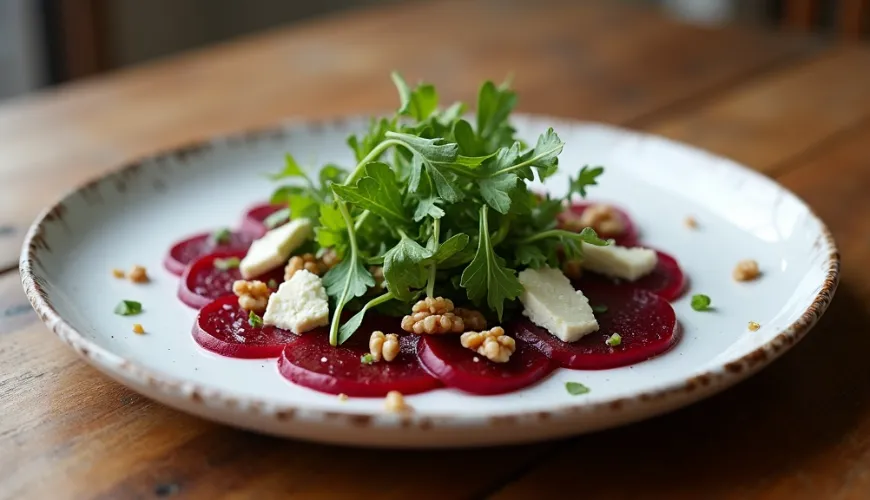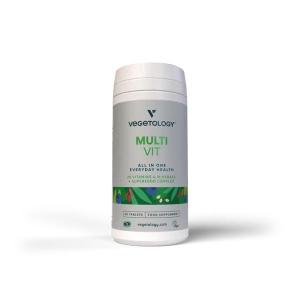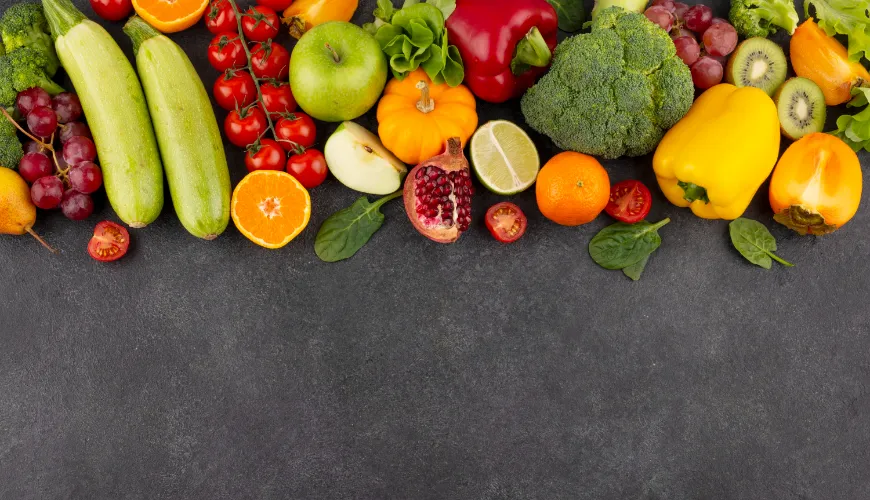
Carpaccio as a Taste Art that Captivates Your Senses

Carpaccio as a Culinary Art - From Beetroot to Salmon
In the world of gastronomy, there are dishes that appeal not only to the taste buds but also to the eyes. One such dish is undoubtedly carpaccio – thin slices of meat, fish, or vegetables served raw or lightly marinated, often with olive oil, lemon, arugula, or Parmesan. Although its roots lie in Italian cuisine, today this dish, with its noble presentation and simplicity of preparation, has become a staple even on our tables. What might be surprising is how versatile and at the same time healthy carpaccio can be if prepared with quality ingredients and a sustainable approach to eating.
Thanks to the popularity of plant-based diets, we can now enjoy not only the traditional beef carpaccio but also its creative alternatives. Among the most popular are beetroot carpaccio and salmon carpaccio, which combine elegance, exceptional taste, and nutritional value without burdening the environment or health.
What is Carpaccio and Where Does it Come From?
The original carpaccio was created in the 1950s in Venice, where chef Giuseppe Cipriani invented it for Countess Amalia Nani Mocenigo, who had a strict diet that prohibited cooked meat. The chef served her thin slices of raw beef, drizzled with a delicate sauce. His creation was named after the Renaissance painter Vittore Carpaccio, whose works were characterized by a similar red color.
Today, however, carpaccio is not limited to beef. It extends to other ingredients while maintaining the basic principle: thin slices, simple seasoning, and maximum flavor experience. What is truly exceptional about this dish is its ability to adapt to modern nutritional trends. Plant-based variants like beetroot carpaccio are particularly appealing to more people seeking healthier, more sustainable, yet tasty alternatives.
Beetroot Carpaccio – Healthier Than It Seems
Beetroot is well known in Central European cuisine but does not always enjoy the deserved popularity. Yet it is a true nutritional miracle, packed with vitamins, minerals, and antioxidants. It contains betaine, which supports proper liver function, and nitrates, which can improve athletic performance through better oxygenation of the muscles.
Its sweet, mildly earthy flavor pairs wonderfully with acidic and rich tones such as balsamic vinegar, citrus, goat cheese, or nuts. Thanks to this versatility, the recipe for beetroot carpaccio has become a hit not only among vegetarians. Its preparation is also simple and does not require any special techniques.
A simple recipe looks as follows: roast or boil the beetroot until soft, let it cool, and slice it very thinly – ideally using a mandoline. Spread the slices on a plate, drizzle with olive oil, lemon juice, and possibly a bit of balsamic vinegar. Top with arugula, toasted walnuts, and small pieces of goat or sheep cheese. The result is a dish that is not only beautiful to look at but also exceptionally tasty and wholesome.
In addition to traditional ingredients, beetroot carpaccio can be enhanced with orange segments, pomegranate, or toasted seeds. The result is an autumn-themed salad suitable as an appetizer, light lunch, or part of a festive table.
Salmon Carpaccio - Luxurious Taste and Omega-3
For fish lovers, salmon carpaccio is certainly an experience. Delicate slices of raw fish, marinated in lemon juice, olive oil, capers, and fresh dill, create a dish that is as delicious as it is healthy. Salmon is a rich source of omega-3 fatty acids, which contribute to the health of the heart, brain, and skin.
Preparing this carpaccio requires few ingredients but high quality. The key is the freshness of the fish – opt for sushi-grade salmon, or alternatively, smoked salmon without added flavors. Arrange the slices on a plate and season lightly. Classic accompaniments include lemon juice, olive oil, freshly ground pepper, and a few drops of Dijon mustard. Additional toppings might include chopped shallots, roasted beetroot, or avocado.
Interestingly, even with salmon, you can think sustainably. Instead of mass-farmed salmon, often burdened with antibiotics or chemicals, choose organic salmon or alternatives such as trout from Czech ponds. It has a similar taste and texture but a significantly lower ecological footprint.
For more festive occasions, salmon carpaccio can be served on crispy bread or crostini, complemented with a gentle ricotta and herb cream. The resulting impression? Simple, yet unforgettable.
Try our natural products
Carpaccio as Part of a Healthy Lifestyle
One of the main reasons why carpaccio is gaining popularity is its low-calorie content, high nutrient density, and easy adaptability to various dietary needs. Whether for vegetarians, pescatarians, or raw food enthusiasts, everyone can find their variant. And yet it remains a dish that retains the elegance and aesthetics commonly associated with fine dining.
In practice, this means that carpaccio can be part of a regular week – as a light dinner, quick lunch, or appetizer for guests. It doesn't have to be anything complicated. One young family from Brno, for example, shared their routine: while the children enjoy roasted beetroot with potatoes, the parents use it in the form of carpaccio with nuts, arugula, and goat cheese. Everyone eats the same thing, just prepared differently – and such cooking is not only practical but also ecological.
It's good to remember that sustainable cooking is not necessarily about denial but rather about creativity and conscious choices. Beetroot carpaccio thus represents not only a tasty dish but also a symbol of a thoughtful approach to eating. The same applies to fish variants if we choose quality and ethically sourced ingredients.
One Recipe, Many Possibilities
What makes carpaccio a truly exceptional dish is its individuality. Everyone can adapt it to their taste, season, or current mood. Cheese lovers can add sheep feta, vegans can opt for nut cheeses or hummus. Those who love exotic flavors might add tahini and pomegranate to beetroot, or complement salmon with mango or wasabi cream.
Similarly, carpaccio is a great way to use leftovers – such as roasted beetroot, raw fish, or herbs. It is a dish that supports a zero-waste approach without feeling like a compromise. As Anthony Bourdain said: “Food is about people. It's always been and always will be." And carpaccio is one of those recipes that show that good food connects people across styles, tastes, and beliefs.
In a world full of complex recipes and strict dietary rules, carpaccio is a refreshing return to simplicity. It's a dish that honors the flavor of the ingredients, doesn't get bogged down in unnecessary embellishments, and still offers space for creativity. Whether you choose beetroot, salmon, or another variant, one thing is certain – with carpaccio, you can never go wrong.





